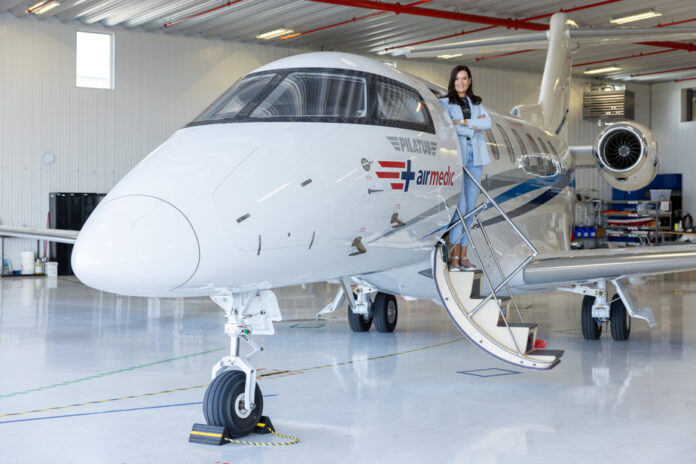(Longueuil) Airmedic and Limosa join forces to develop an electric ambulance plane. To add to the engineering challenge, the device called LimoMedic will have the ability to take off and land vertically.
The two partner companies unveiled a scale model of the future device on Tuesday morning in the Airmedic hangar at Saint-Hubert Airport.
The medical transport company offers its expertise “with the aim of improving the interior design” of the electric vertical take-off and landing aircraft (AÉDAV) designed by the young Montreal company Limosa.
Currently, Airmedic’s fleet includes Pilatus aircraft and Airbus helicopters. The new LimoMedic device is expected to be operational in 2028.
Thanks to this partnership, Airmedic wishes to make a shift towards the electrification of its devices in order to reduce its ecological footprint.
“We all have a role to play in reducing our ecological footprint,” declared Airmedic CEO Sophie Larochelle, adding that she wanted to leave “a greener future to future generations.”
The CEO justified this partnership with a young developing SME because she says she prefers to “intervene sooner rather than later” in order to be able to carry out electric medical air transport in the medium term.
However, several obstacles stand on the horizon before Airmedic makes a financial commitment to the adventure or even before signing a promise to purchase for a first AÉDAV.
First, the aircraft will need to be able to fly long distances and in extreme winter conditions. It should be remembered that Airmedic serves the entire Quebec territory, from the American border to Nunavik.
Currently, its Pilatus planes have a range of around 3,500 kilometers while its helicopters can cover more than 500 kilometers.
For the moment, Airmedic’s contribution is limited to consultation with a view to developing an ambulance aircraft configuration that meets market needs.
The founding president of Limosa, Hamid Hamidi, confirmed that the manufacturing plant would be built near the airport, in Longueuil. Certification procedures are also underway with North American authorities, including Transport Canada.
According to Mr. Hamidi, the model developed by Limosa has several advantages over other devices in development. First, its cabin is designed to accommodate up to seven passengers or two stretchers, which would make it the most spacious AÉDAV in its category.
This feature offers Limosa an opportunity to break into the “niche market” of ambulance planes, believes its CEO. He hopes to use Quebec as a springboard to then attack the Canadian and American market.
Also present for the press conference, the mayor of Longueuil, Catherine Fournier, was delighted to welcome a new innovative company in the aerospace field in Limosa. She is particularly proud of the fact that “the decarbonization of aviation is going to happen in Longueuil,” she said, promising her support.















